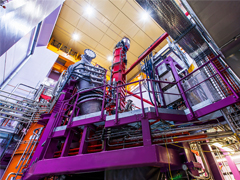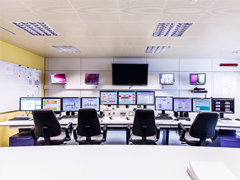Plasma plant

Where the incineration of radioactive waste is concerned, Zwilag has chosen an entirely new and state-of-the art method. The radioactive waste is not incinerated as usual, but is thermally decomposed or melted in a plasma plant at temperatures of up to 20,000° C. First seen in metallurgy, the plasma process permits both the processing of combustible materials and the melting of metallic parts, concrete and other solid matter. The same process can be used to vitrify organic and anorganic matter in the residue ready for final storage. All organic matter is totally decomposed with an extremely hot electric arc and after-burner with a downstream rapid cooler, so that no dioxins or furans can be formed. This, the first plant of its kind to be used for nuclear waste, evolved from a conventional plasma plant for highly toxic matter

Although incineration cannot reduce the radioactivity of the waste, it can reduce its volume and make it more suitable for final storage by adding the medium required for vitrification.

The plasma plant is operated for several weeks without interruption every year. During these operating periods, all plasma plant processes can be steered and monitored by shift workers from a command booth equipped with state-of-the-art technology.
